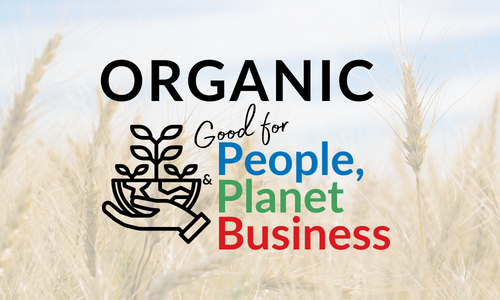Delivers agency guidance to remove obstacles to the growth of organic production
Speaking today to member-attendees of the Organic Trade Association’s (OTA’s) Policy Conference, Secretary of Agriculture Tom Vilsack officially recognized the unique production system covering U.S. organic agriculture, and announced guidance to remove agency obstacles to its continued growth.
"Organic is not the 'same as.' It is its own separate commodity and needs to be treated as such. I'm committed to that," Secretary Vilsack told policy attendees. (See USDA's press release)
A major part of his speech focused on plans to increase coverage options for organic producers this year—and more during 2014—under federal crop insurance provided through USDA’s Risk Management Agency (RMA). In fact, he said, RMA will remove the current five percent organic rate surcharges on all future crop insurance policies beginning in 2014.
Getting accurate data is the biggest obstacle for developing better crop insurance options for organic farmers, Secretary Vilsack pointed out, expressing his desire that Congress help USDA make further progress by renewing the 2008 Organic Data Initiative as part of a new Food, Farms and Jobs bill.
He added that USDA will be providing new guidance and direction on organic production to all USDA agencies directing them to recognize the distinct nature of USDA certified organic production and organic goods, and to take into account the documentation and inspection required for organic certification when considering organic operations’ eligibility for USDA programs and policies.
The landmark guidance document Vilsack alluded to points out that through the National Organic Program (NOP), USDA has helped farmers and other operations create an industry now encompassing over 17,000 organic businesses in the United States and achieving $35 billion in U.S. retail sales. In fact, organic ranks fourth in U.S. food and feed crop production at farm-gate values when viewed as a distinct category.
Organic standards already include requirements relevant to conservation programs, food safety, risk management, and export certifications. As a result of overlapping requirements, organic operations have faced redundant paperwork and fee burdens that would be streamlined or eliminated through cross-agency recognition protocols. Acknowledging this, the guidance document outlines that all USDA agencies consider a valid USDA-NOP organic certificate and Organic Systems Plan as the mechanism for third-party documentation for eligibility and proof of compliance for various agency programs.
The guidance also addresses data collection and research priorities to position organic food and farming for continued success.
“Organic production models may provide alternative solutions to current agricultural challenges, and it is the agency’s responsibility to develop diversity in research and alternatives for all producers,” the guidance points out. Importantly, the guidance also establishes that agency administrators review their goals and report on actions taken towards achieving the USDA strategic goals related to organic agriculture.
Organic production and commerce are bright spots in the American marketplace of innovation and entrepreneurship, and particularly can contribute to USDA’s goals for rural economic development. In recognition of its potential, the 2010 USDA Strategic Plan called for an increase of 25 percent in U.S. certified organic businesses by 2015.
“This recognition and guidance mean that organic no longer has to be a square peg trying to fit in a round hole,” said Christine Bushway, OTA’s CEO and Executive Director. “On behalf of the 6,500 certified businesses that OTA represents, we thank the Secretary Vilsack and USDA staff for their leadership and vision.”
The OTA Policy Conference was held in conjunction with OTA’s members-only conference and congressional fly-in. OTA member companies are scheduled to meet with 150 congressional offices on Wednesday to advocate for policies that support organic food and agriculture.
The Organic Trade Association (OTA) is the membership-based business association for organic agriculture and products in North America. OTA is the leading voice for the organic trade in the United States, representing over 6,500 organic businesses across 49 states. Its members include growers, shippers, processors, certifiers, farmers' associations, distributors, importers, exporters, consultants, retailers and others. OTA’s Board of Directors is democratically elected by its members. OTA's mission is to promote and protect the growth of organic trade to benefit the environment, farmers, the public and the economy.











